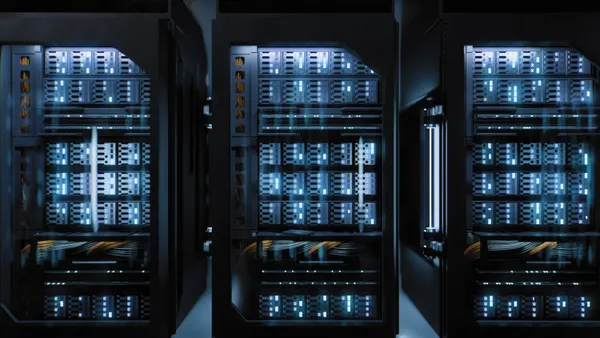The following is a contributed article by Will Sierzchula, a managing consultant at Guidehouse.
U.S. electricity usage stagnated over the past decade, resulting in power providers facing the formidable challenge of revenues not keeping pace with rising costs. Electric vehicles (EVs) are often touted as a savior for the power industry as executives hope the technology’s widespread adoption will help kickoff a virtuous cycle of rising demand and utility fortunes.
The National Renewable Energy Laboratory’s Electrification Futures Study’s medium scenario predicts EV consumption will increase 30-fold from 2020 to 2050. For an industry adjusting to systemic change through digitization, emissions regulations, and the rapid rise of intermittent generation, the additional load stemming from EVs would be welcome news. And although privately owned EVs have dominated the news because they comprise the majority of sales, fleet vehicles represent a more nuanced use case that deserves the attention of utility executives.
Fleet EVs, a high use component of the growing electrified transportation market, are not your typical captive market. Load from recharging these vehicles represents an uncommon beast in the power utility wilderness —demand that has the flexibility to determine where it draws power. Although residential customers cannot pick up their homes to take advantage of a neighboring utility’s lower electricity rates, EV fleet owners have some flexibility in determining where their vehicles recharge along a supply chain. Utilities cannot be complacent and just expect to be the preferred electricity provider for fleets based in their territory.
Growing EV medium and heavy duty vehicle market
Commercial vehicles, including municipal and business fleets, account for about 20% of total U.S. new vehicles sales. Trucks in particular contribute 10% of miles traveled across all vehicles. While EVs account for a slow but steady increase in passenger car sales, larger fleet vehicles (Class 2–8) have been laggards in the electric mobility transition. This is because medium and heavy duty vehicles (MHDV) are bigger and would require correspondingly larger batteries.
Battery cost has been the biggest factor limiting the development and adoption of electric MHDVs. However, with improved economics and fleet sustainability efforts, auto manufacturers recently have shown more interest in producing electric MHDV models. For example, the number of zero-emission HD truck models in production is expected to increase from five to 19 over the next 3 years. With this blossoming electric MHDV market and the prospective load it represents, Guidehouse has seen an uptick in the number of utilities interested in adoption projections and resulting grid impacts for powering these vehicles.
Competition or collaboration?
If MHDVs do electrify and fleet managers examine operating expenses, the question becomes: How will utilities respond to a compelling but competitive growth opportunity in fleet demand? Will they collaborate to align electricity rates along busy transportation corridors, or will they engage in a price war to attract fleet charging? If utilities decide to align rate prices across territories, then fleet managers will not be incentivized to adjust refueling and supply chains to take advantage of low-cost electricity. In this case, future fleet EV demand will likely benefit utilities that serve main transportation corridors as fleet managers would not consider electricity prices when optimizing routes.
In a scenario where utilities compete against each other on price to attract EV fleet manager business, this market opportunity could encourage innovation, driving down electricity rates and benefiting all ratepayers. A simplified example shows how this could play out (in reality, the calculation would be more complicated and include demand and grid connection charges).
Interstate-90 is an east-west transcontinental freeway running through Albany, N.Y., Chicago and Seattle. Along this route, the electric utility NIPSCO serves Gary, Ind., with small commercial and industrial rates of $0.09/kWh. I-90 also goes through Madison, Wisc., where Madison Gas and Electric (MGE) has power prices of $0.113/kWh. If fleet managers decided to recharge some of the numerous tractor trailers with NIPSCO instead of MG&E, they stand to reduce their fuel costs by more than 20%; this approach is referred to as fuel purchase routing. It is also possible for utilities to introduce cheaper charging rates to specifically attract fleet managers, increasing competition in the power market.
This new flexible demand might encourage nimble competitors to enter the market. While regulated utilities may struggle to quickly adjust rates along transportation corridors in a suddenly competitive environment, energy as a service (EaaS) non-utility providers could poach price-conscious fleet managers by deploying their own infrastructure and bypassing utility services. Large companies such as Amazon, Facebook and Walmart have taken a similar approach for their general electric needs by purchasing renewable power directly from wholesale producers.
EaaS providers need to make considerable investments in generation and storage capabilities to meet fleet charging needs. However, considering the recent interest in new energy opportunities by oil companies such as BP, Total and Enel, deep-pocketed companies might start their own venture or attempt to work with a company that has a large electric fleet to supply power along a heavily trafficked corridor.
The utility landscape continues to shift
Recent Guidehouse analysis in some utility territories projected that by 2050 fleet vehicles, due to their high vehicle miles traveled and heft, would account for similar load impacts as the much larger residential EV segment. As markets for distributed generation, batteries and EVs mature, fleet managers could be key drivers for competition between power providers. Adding some market fundamentals to the regulated utility sector would likely result in improved efficiency and lower rates, a win for all consumers.






















